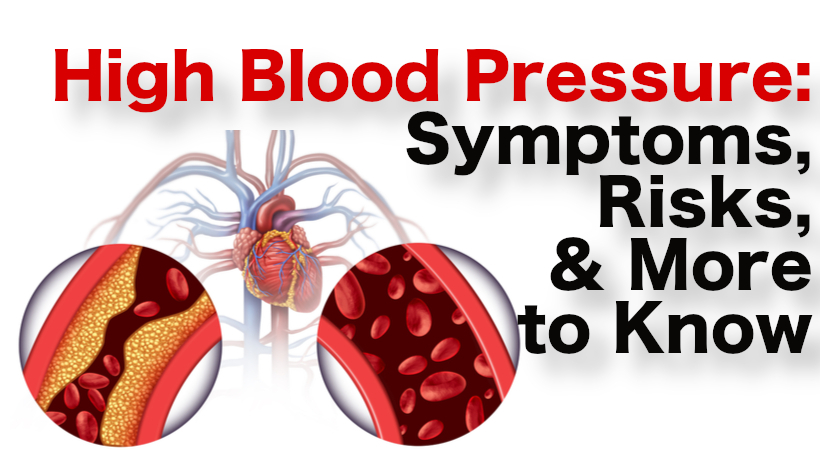High blood pressure, also known as HBP or hypertension, is a very common condition, affecting more than three million people in the United States every year. Heart.org marks high blood pressure as a symptomless “silent killer” that quietly damages blood vessels and leads to serious health problems. While HBP cannot be cured, it can be lowered by making healthy lifestyle changes.
Diagnosing HBP
One of the best ways to diagnose high blood pressure is to go to the doctor and have your blood pressure measured with a specific device called a sphygmomanometer (aka a pressure cuff). If your blood pressure is normal (less than 120/80), then you do not have high blood pressure. If your blood pressure is above 120/80, then you will be diagnosed with high blood pressure and your doctor may recommend several healthy lifestyle changes to lower the BP level.
Symptoms to look out for
It is a common myth that people with high blood pressure will experience specific symptoms. Other myths include: HBP will have the patient experiencing headaches and nosebleeds, blood spots, facial flushing, and/or dizziness. While there may not be a direct cause or symptom for high blood pressure, such factors like dizziness should not be ignored (since it may be a sign for other conditions).
Note: Never self-diagnose high blood pressure. It is best to get a clinical diagnosis as advised by Heart.org.
Risk Factors
There are certain risk factors of high blood pressure to be aware of. Those that are related to you as an individual include
- Family history – if your family has a history of high blood pressure, there is a higher chance that you may get it, too.
- Age – the more we age, the better chance we have of being diagnosed with high blood pressure.
- Gender – Women 65 and older are more likely to get diagnosed with high blood pressure than men.
- Race – Studies have shown that African-Americans are more likely to be diagnosed with HBP than any other race.
- Chronic Kidney Disease – be wary if you have Chronic Kidney Disease. Having HBP may also cause further kidney damage.
Preventable Risk Factors:
- Lack of physical activity
- Sodium-heavy diet
- Obesity
- Excessive alcohol consumption
- Sleep apnea
- High cholesterol
- Smoking
- Stress
Preexisting Medical Condition/Secondary Hypertension: pregnancy-induced hypertension, heart defects, and kidney-related diseases are preexisting conditions that may have a side effect of hypertension or high blood pressure.
Making Lifestyle Changes
If you have been diagnosed with high blood pressure, it is important to note that the changes you make are a life long journey. It is a lifelong commitment. Heart.org suggests these lifestyle changes for reducing HBP:
- Eat a well-balanced diet that’s low in salt
- Limit alcohol
- Enjoy regular physical activity
- Manage stress
- Maintain a healthy weight
- Quit smoking
- Take your medications properly
- Work together with your doctor
HBP may lead to other life-threatening conditions
- heart attack – high blood pressure damages the arteries and can block blood flow to the heart.
- stroke – Blood vessels can clog easily with HBP
- sexual dysfunction – Lower libido in women or erectile dysfunction in men due to the lack of blood circulating throughout the body.
- heart failure – blocking blood flow to the heart can make the heart not work as well as it should.
- kidney failure
- loss of eyesight – HBP can damage blood vessels in the eyes, making it harder to see/can lead to vision loss.
- chest pain – HBP can lead to microvascular disease (MVD) which causes chest pain.
- Atherosclerosis – narrowing of artery walls throughout the body. This can cause pain or fatigue.
Sources:
www.heart.org/en/health-topics/high-blood-pressure



